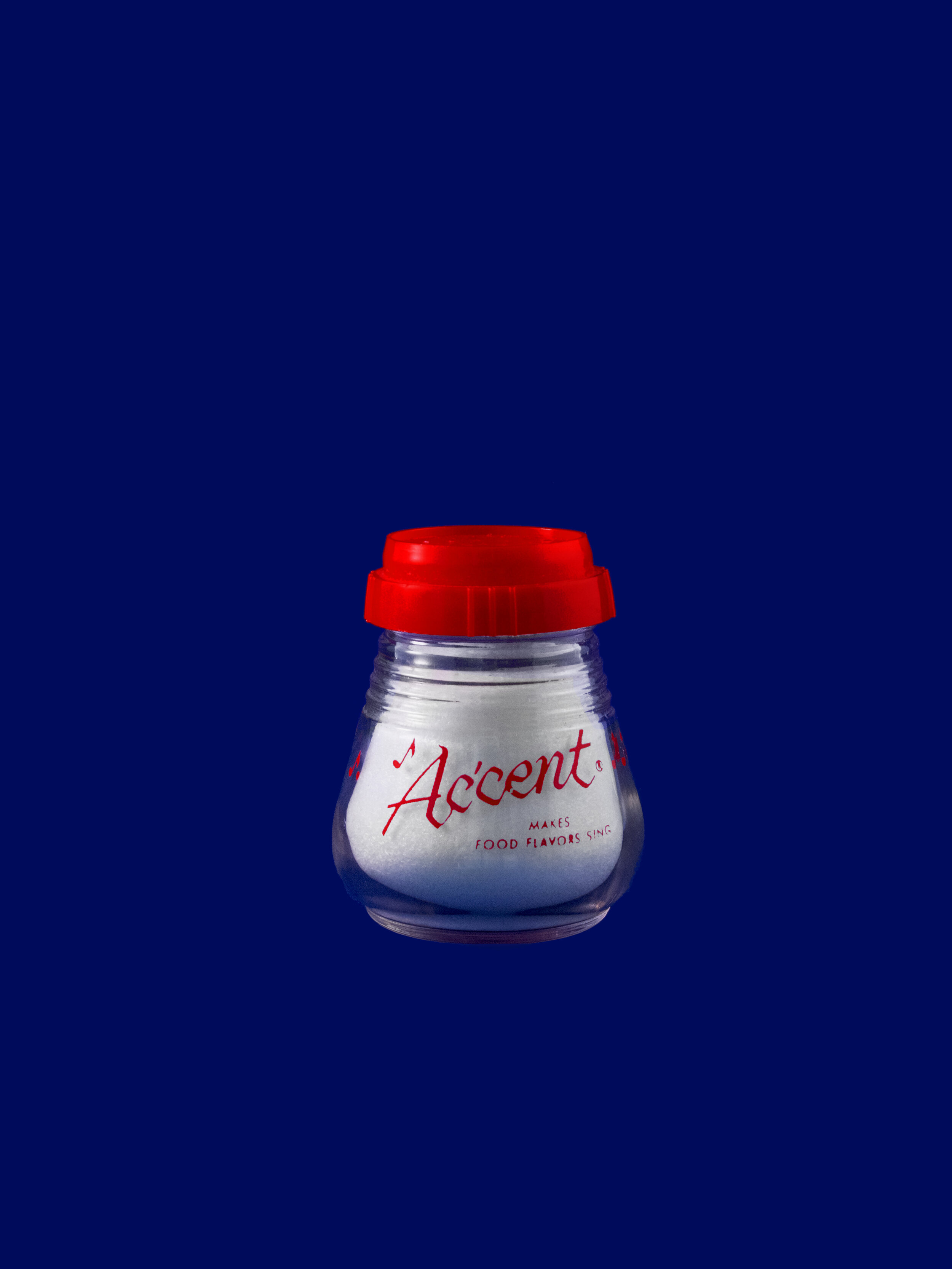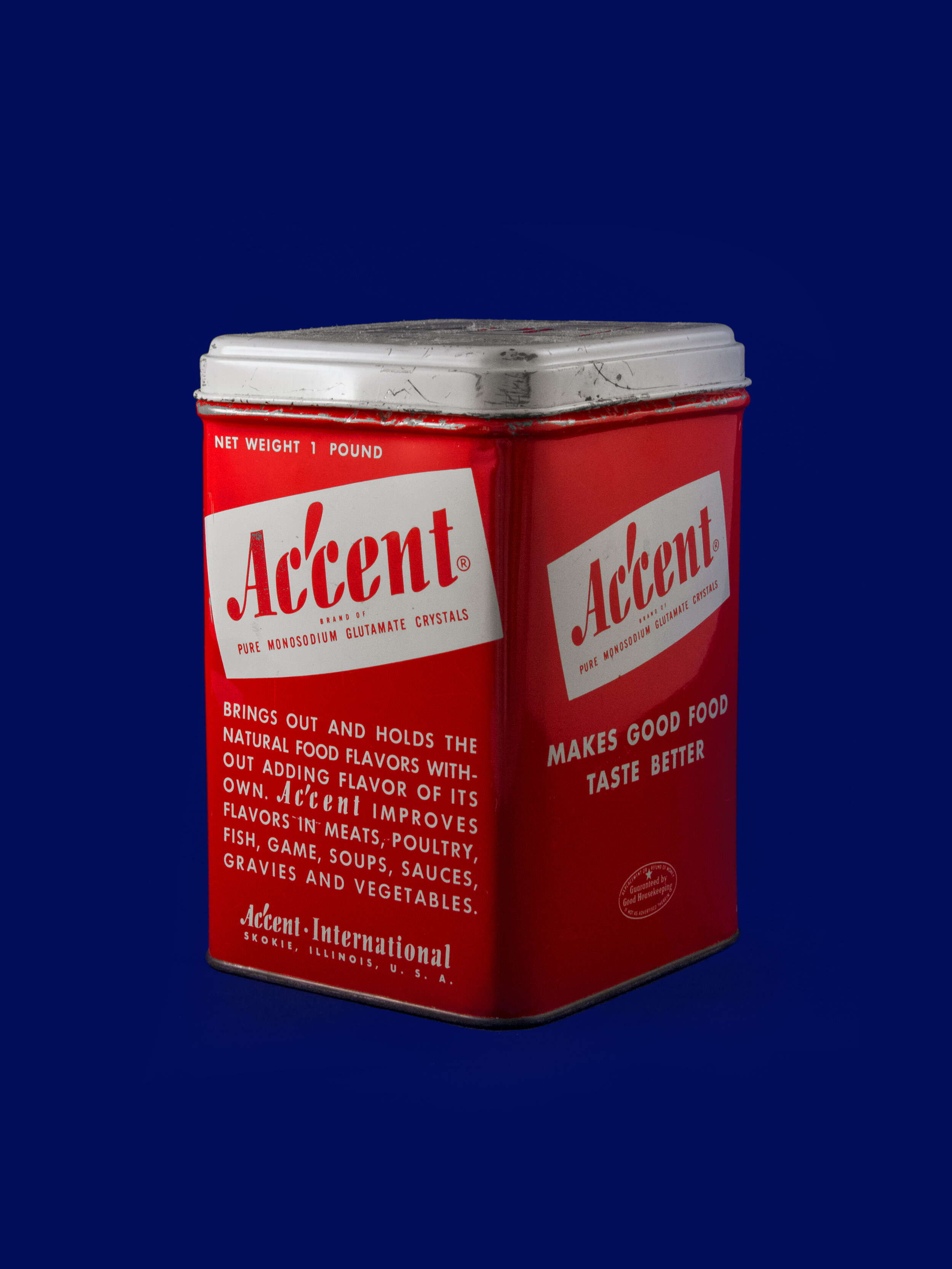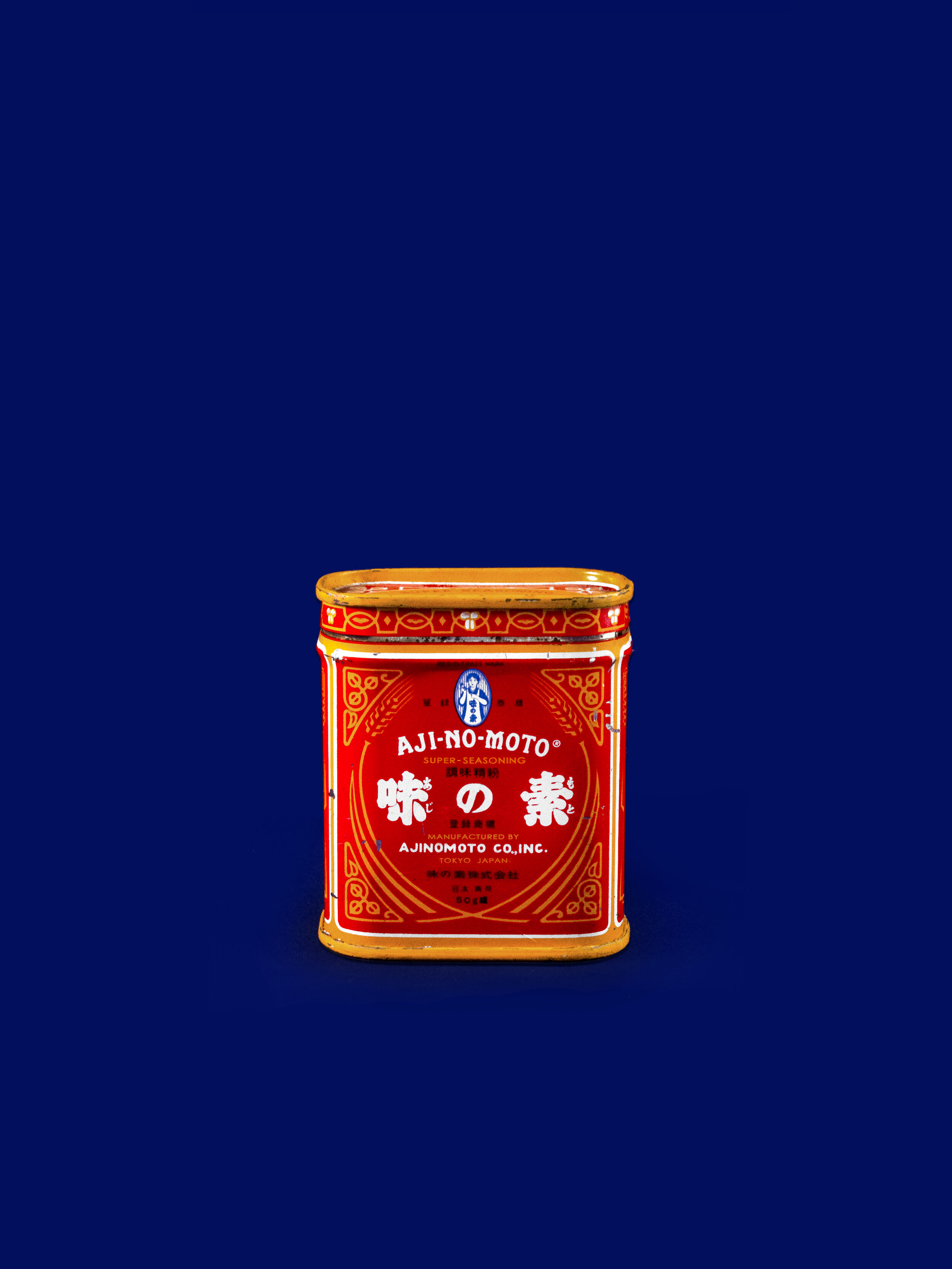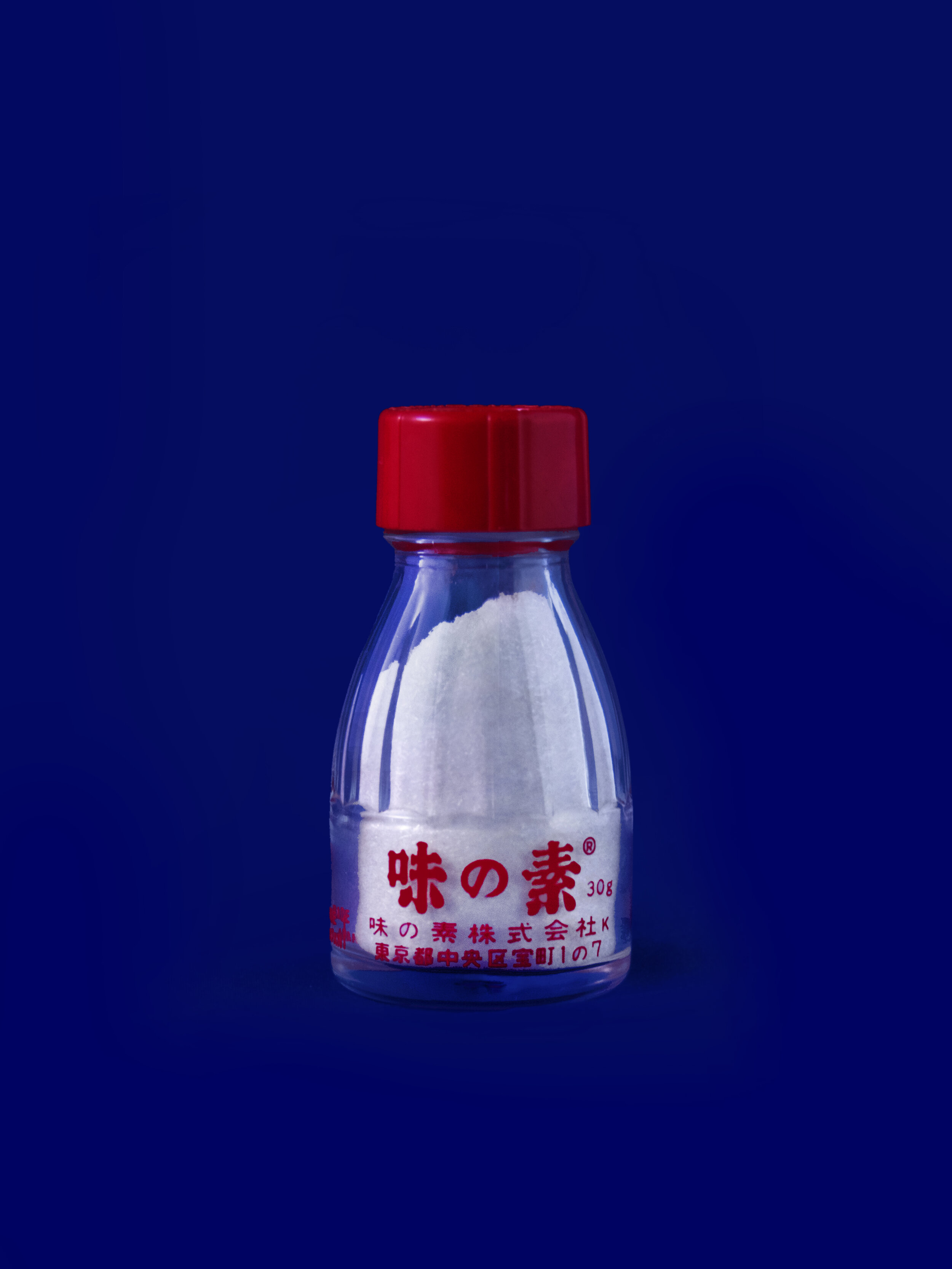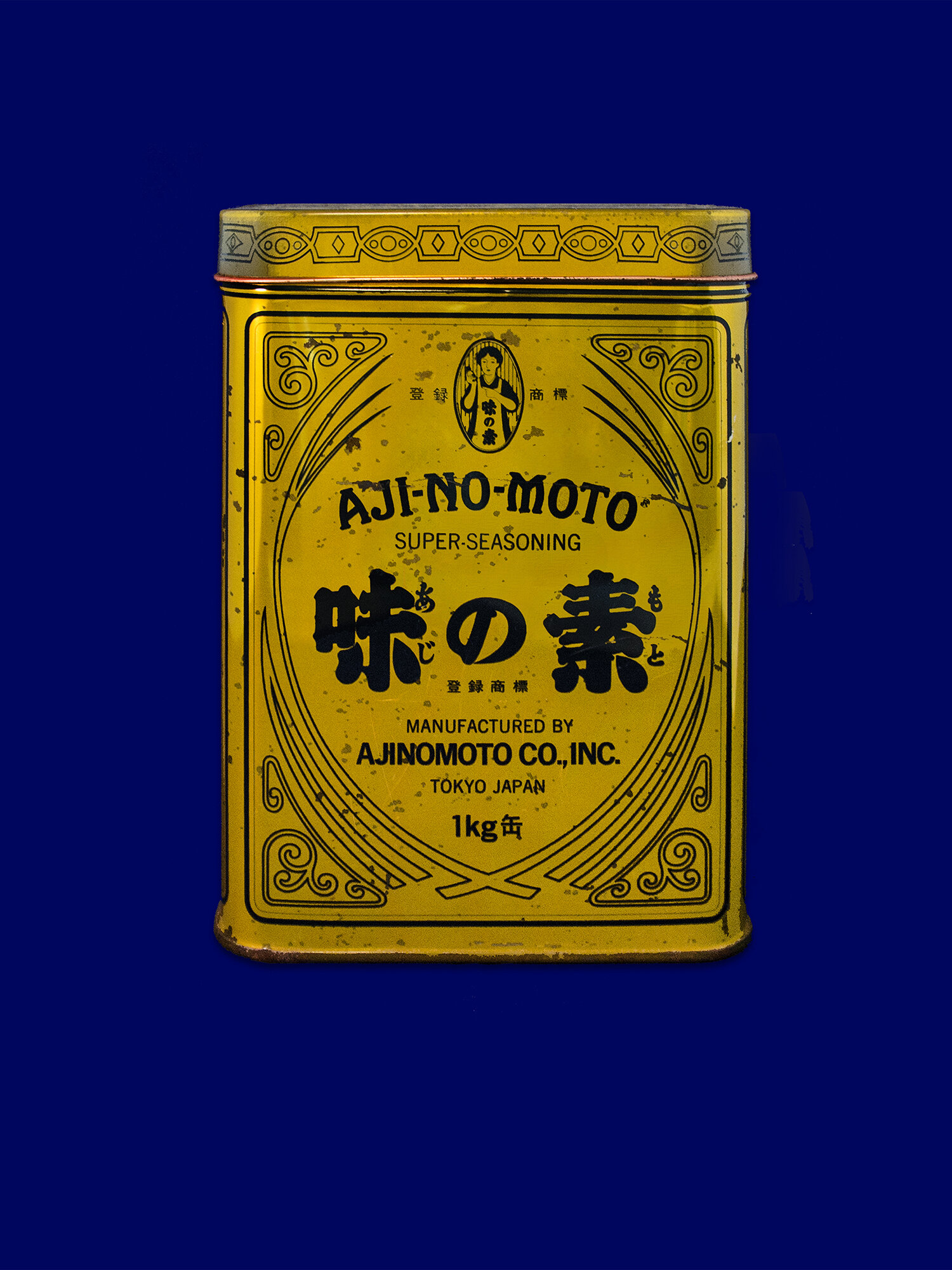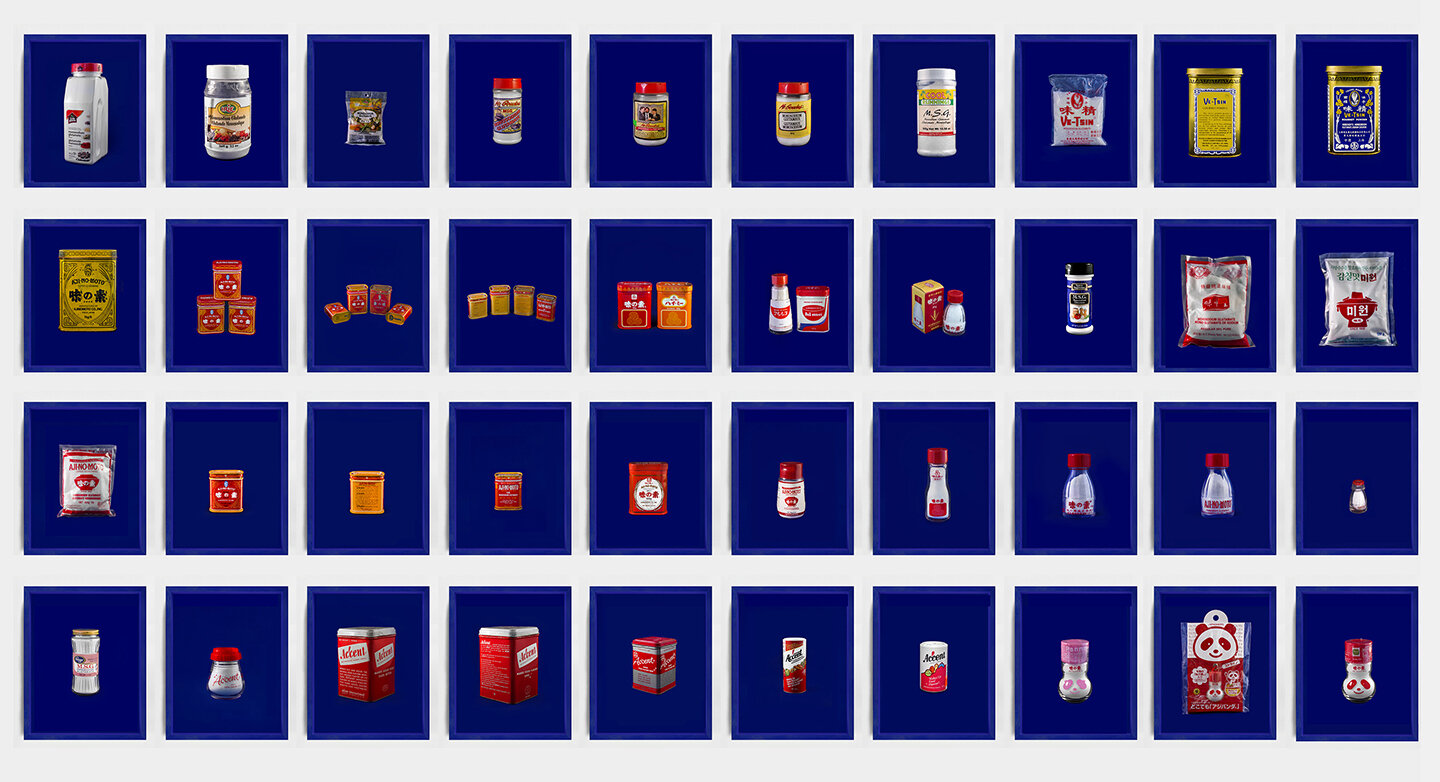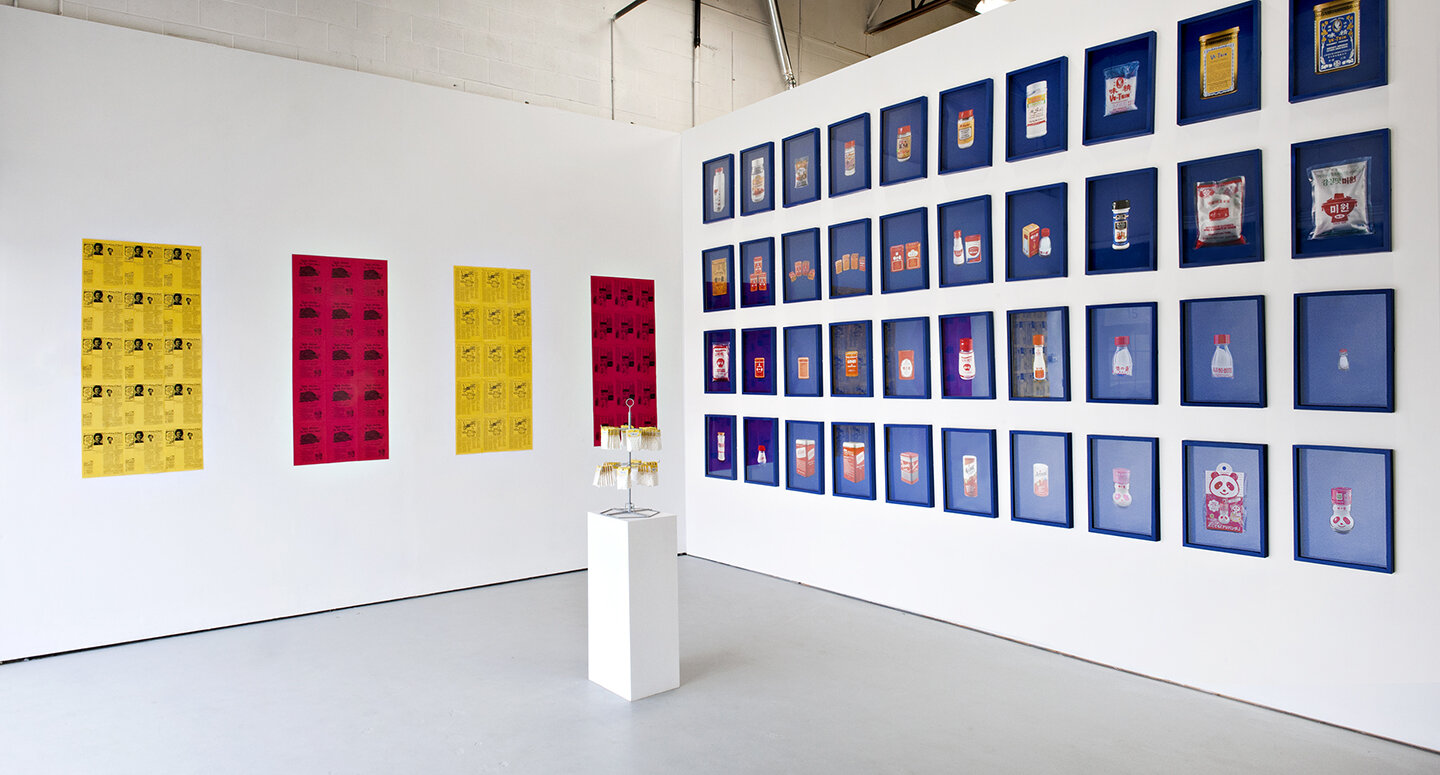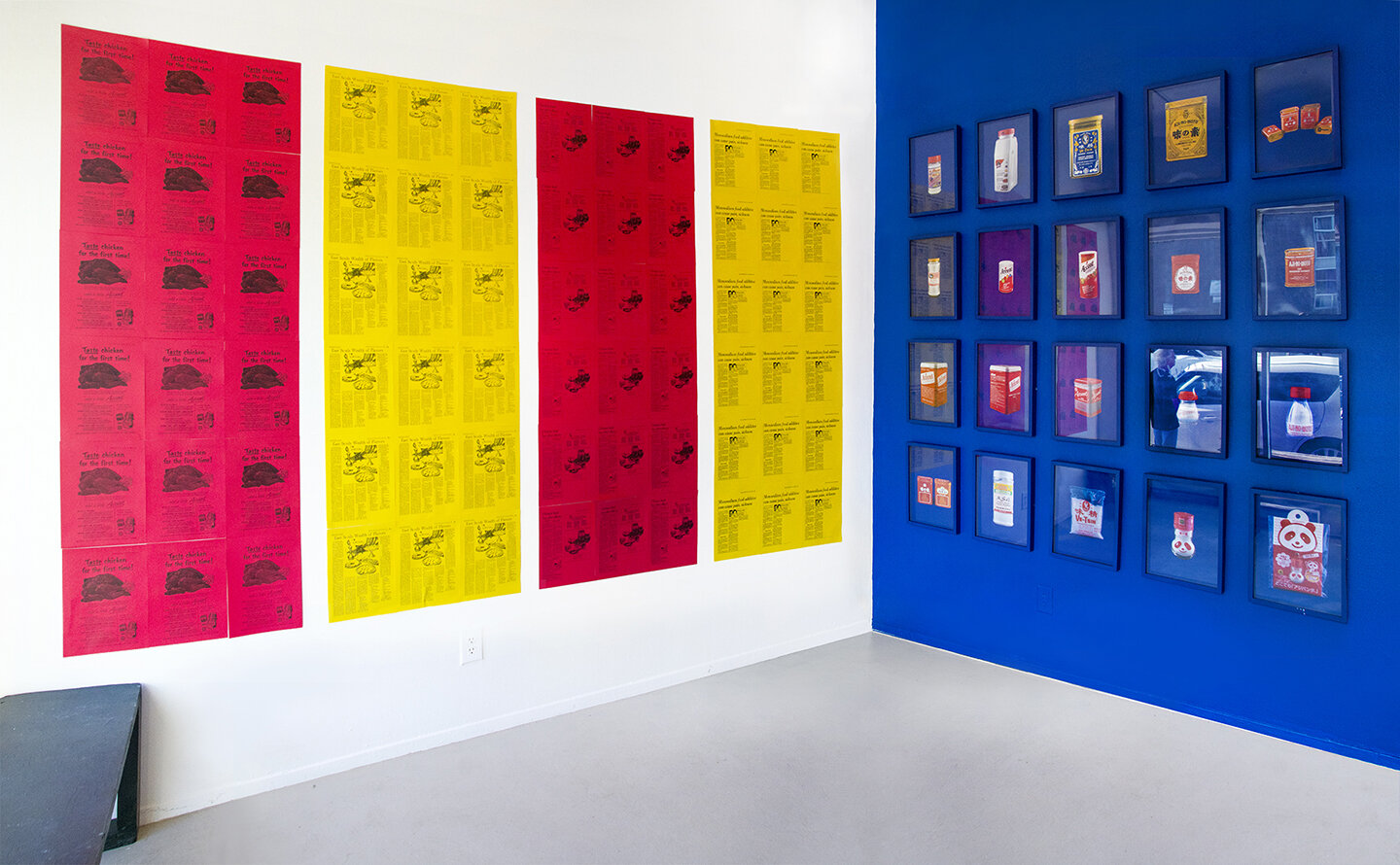A Visual History of MSG Marketing, 2016 – 2017
Chromogenic Print
12 x 16”
[The] Chinese restaurant syndrome was, at its core, a product of a racialised discourse that framed much of the scientific, medical and popular discussion surrounding the condition. This particular debate brought to the surface a number of widely held assumptions about the strangely ‘exotic’, ‘bizarre’ and ‘excessive’ practices associated with Chinese cooking which, ultimately, meant that few of those studying the Chinese restaurant syndrome would question the ethnic origins of the condition.
Ian Mosby, That Won-Ton Soup Headache’: The Chinese Restaurant Syndrome,
MSG and the Making of American Food, 1968–1980 Social History of Medicine Vol. 22, No. 1 pp. 133–151
In 1968, the New England Journal of Medicine published a letter to the editor from one reader describing radiating pain in his arms, weakness and heart palpitations after eating at Chinese restaurants. He mused that a combination of cooking wine, MSG or excessive salt might have spurred these reactions. Reader responses poured in with similar complaints, and scientists jumped to research the phenomenon, centring on the glutamic salt, MSG. Not long after, the “Chinese Restaurant Syndrome” was born.
When first introduced, MSG was not the antagonized evil that it is often know as today. From the 1930s to late 1960s, MSG was commonly used in North America, often marketed under the brand “Accent” and advised to be used as another seasoning in addition to salt and pepper. As more paranoia came to surround MSG, Western attitudes shifted, assigning the negative connotations of MSG solely on Chinese cuisine. To this day, it is frequently only Chinese and East-Asian restaurants that are forced to attest that they do not use the seasoning in their establishment to assure customers that their business is safe.
Visceral and often communal, food is one of the most accessible ways to engage with a culture. Through its consumption, creation and interpretation, food possesses the unique capability to extend beyond its corporeal restrictions to reflect individual and shared stories, and historical and political climates. Combining a history of product marketing alongside archival materials, Accent presents a case study of the nuanced and racialized undertones within the everyday.
A Visual History of MSG Marketing is a series of photographs featuring MSG containers and packaging which include a collection of Ajinomoto MSG (The first MSG company from Japan), Accent MSG (largest and oldest distributer in the West), and an assortment of others from around the world (Korea, China, Taiwan, Canada, etc). The photo series includes depictions of MSG before it became antagonized to present day packaging that is less explicit in associating itself with the seasoning.
Fusion Cuisine, No MSG, I Can’t Believe It’s MSG and A Visual History of MSG Marketing are four components of Accent; a project featuring a history of MSG product marketing alongside archival materials from the Toronto Star Newspaper.
Installation photos by Morris Lum. Accent, Y+ Contemporary, 2017.
This project was made possible with the support of the Toronto Arts Council and the Ontario Arts Council.

